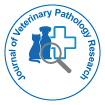Causes of Obesity in Cats and Dogs
Received: 27-Sep-2017 / Accepted Date: 04-Oct-2017 / Published Date: 08-Oct-2017
Editorial
Obesity can be described as changes that occur due to excessive accumulation of adipose tissue in the body. It is one of the most common disorders based on feeding in pets. It is often the result of the fact that the proportion of food taken in the diet is higher than the metabolic needs. Cats and dogs are overweight if they are between 10% and 20% of their weight, and obese if they weigh more than 20% of their weight. Obesity in domestic cats and dogs is an increasingly common condition nowadays. Nutritionists say that obesity is the most common health problem in everyday life and they say that almost half of the cats and dogs they examine are overweight and the other half is overweight. If we look at it from this point, obesity emerges as the most important cause of death in big race dogs.
Some diseases (such as hypothyroidism and hyperadrenocorticism in dogs), pharmacological drugs (such as polyphagia due to ingestion of glucocorticoids and the effects of anticonvulsants) and rare genetic defects can also cause obesity, but the development of obesity is mainly due to the impairment of balance between energy intake and consumption of energy taken. For this reason, the occurrence of positive energy balance, along with the problems of taking too much food with the diet or converting the energy of the foods taken, causes obesity. Numerous causes, such as genetic factors, lack of physical activity and energy content of the diet, can be the basis for all these. The racial genetic predisposition can be seen in both dogs (Labrador Retriever, Caim Tender, Cavalier King Charles Spaniel, Scottish Terrier, Coeker Spaniel) and cats (Domestic Short-haired). One of the major risk factors in both species is castration. As a result of many studies on this subject, it has been determined that weight gain increases with the decrease in metabolic activity rate in castrated animals. The contribution of dietrelated factors to the development of obesity in cats and dogs can not be ignored. For example, in dogs, the number of meals per day, snack foods other than meals, consumption of food leftovers and home cooking are just a few of the reasons for obesity. The psychological causes of obesity include anxiety and depression in the animal, the disappearance of regular meals by the animal owner, and the removal of the animal's control of the feeling of satiety.
Unlike most mammals, cats do not have the amylase enzyme secreted from the saliva, an enzyme that digests carbohydrates. The cats are not created as consumers of carbohydrates. An ideal cat diet should contain high protein. The cat can not control the large carbohydrate burden. After a rich meal in carbohydrates, the level of blood glucose in the cat remains at a very high level for too long. This can pose a risk for diabetes. This risk applies equally to dogs. Obese cats, which do not consume nutrients, are exposed to liver fattening and this disease can be fatal. Weight loss should be gradual and consist of a healthy diet and plenty of exercise.
Preventing excessive weight gain is the best approach to weight control in pets. Once the animal gains extra weight, it is more difficult to lose weight. As in humans, too much weight in dogs also manifests itself as an extra burden on the organs. This burden on the organs sometimes leads to death with diseases. It is not difficult to predict that the quality and duration of an obese dog's life will be less. For an obese dog, besides health problems, even breathing and playing games is a serious problem. All of these problems create an environment of constant discomfort with the effects of reduced quality of life, such as overheating and pain, and make the dogs restless. A pet's long life span is closely related to weight control. It has been shown in studies that energy-restricted diets have extended the life span of dogs by almost 2 years.
The obesity of a pet is a problem not only of the animal but also of the owner. Many pet owners, however, believe that overfeeding of their animal is a sign of love, and for this reason they feed it too much. An animal that is constantly over-fed will perceive this approach as a behavior to be grateful and almost begs to possess more nutrients. The animal owner thinks that the animal loves him and so they enter the vicious cycle of "overfeeding - thinking of being loved". However, the best way to show our love for our pets is to feed them in a way that will ensure a healthy and long life. For this reason, nutrition management has a very important place in preventive veterinary medicine. The having to this knowledge of all pet owners and the observing and organising the nutrition on every routine examination of the veterinarians are necessary approaches for weight control of pets and the living a healthy and long life of them.
Citation: Altiner A (2017) Causes of Obesity in Cats and Dogs. J Vet Pathol Res 1: e101.
Copyright: © 2017 Altiner A. This is an open-access article distributed under the terms of the Creative Commons Attribution License, which permits unrestricted use, distribution, and reproduction in any medium, provided the original author and source are credited.
Select your language of interest to view the total content in your interested language
Share This Article
Open Access Journals
Article Usage
- Total views: 7352
- [From(publication date): 0-2017 - Nov 17, 2025]
- Breakdown by view type
- HTML page views: 6174
- PDF downloads: 1178
